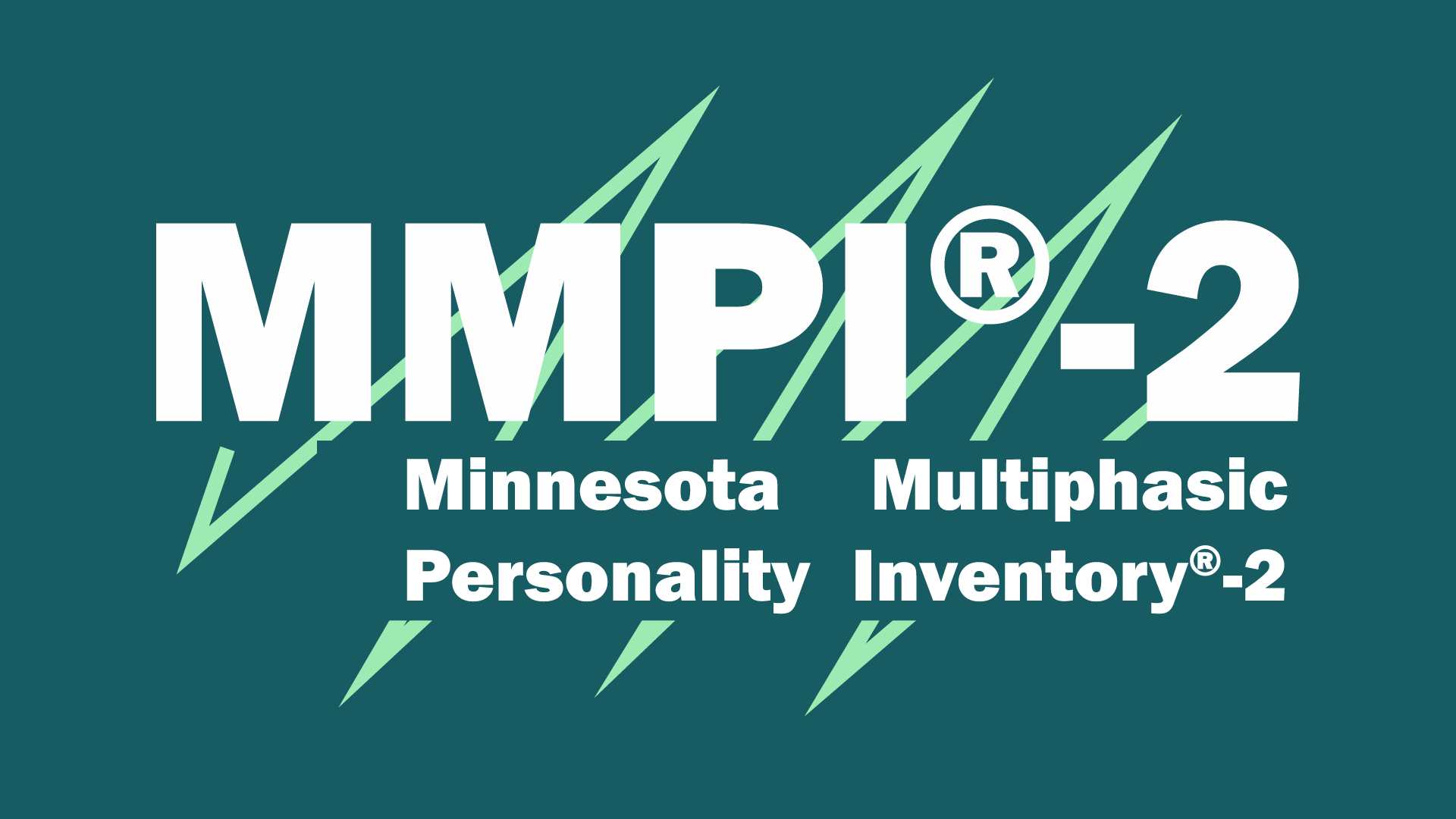The Minnesota Multiphasic Personality Inventory-2 (MMPI-2) is one of the most widely recognized and utilized psychometric tools for assessing adult psychopathology. Developed in the late 1930s by Starke Hathaway and J.C. McKinley, the MMPI was initially designed for routine diagnostic assessments. Its empirical keying approach and robust construction made it a groundbreaking tool in personality testing. Over time, the MMPI evolved into its revised version, the MMPI-2, launched in 1989, with subsequent updates extending its application further.
Personality Testing: A Key to Understanding Behavior
Personality tests, including the MMPI-2, play a critical role in observing and describing the structure and content of personality. These tools help clarify diagnoses, identify problematic behavioral patterns, and understand intra- and interpersonal dynamics. They also provide valuable insights into treatment implications. Personality tests are broadly classified into two categories:
- Objective Testing
Objective tests use specific, structured questions or statements where individuals respond using fixed answers or rating scales. These responses are scored and compared with a reference group. Examples include:- Minnesota Multiphasic Personality Inventory (MMPI; MMPI-2)
- Millon Multi-Axial Inventory III (MCMI-III)
- 16 Personality Factors (16PF)
- NEO Personality Inventory (NEO-PI)
- Projective Testing
Projective tests involve ambiguous stimuli, encouraging clients to respond freely. These responses reveal unconscious or conscious needs, motives, and dynamics. While insightful, they are more challenging to score and interpret compared to objective tests. Examples include:- Rorschach Inkblot Test
- Thematic Apperception Test (TAT)
- Projective Drawing Tests (e.g., Draw-A-Person, Draw-A-House)
- Sentence Completion Tests
The Evolution of the MMPI to MMPI-2
Initially, the MMPI consisted of 1,100 items, later refined to 566 by its first publication in 1942. The original test included eight clinical scales and validity scales, with additional scales such as MF (Masculinity-Femininity) and Si (Social Introversion) introduced later. The MMPI-2 further enhanced the test’s utility and accuracy, incorporating feedback from experts like James N. Butcher, John R. Graham, Yossef S. Ben-Porath, Auke Tellegen, and W. Grant Dahlstrom.
Key Features of the MMPI-2:
- Revised in 2001, retaining 84% of the original items in their original or updated form.
- Expanded scales to include new clinical and validity measures.
- Contains 567 true/false items.
- Separate forms are available for adolescents and adults.
- Normative sample includes 2,600 U.S. residents (1,138 males and 1,462 females) aged 18–90, reflecting census-derived data.
- Generates an individual’s clinical profile by comparing results with a normative sample.
Why the MMPI-2 Stands Out
The MMPI-2 is renowned as the most widely used psychometric test for assessing adult psychopathology globally. It finds applications in mental health, medical, and employment settings. With over 10,000 published research papers and hundreds more added annually, the MMPI-2 is a cornerstone in psychological evaluation.
Accessibility and Administration
- Published by the University of Minnesota Press and distributed by Pearson.
- Available in multiple languages, including English, Spanish, and Canadian French.
- Adaptable formats include paper-and-pencil, audio cassette, compact disc, and computer-based options.
To administer the MMPI-2, practitioners must meet specific qualifications, such as holding a license to practice psychology independently or completing graduate-level courses in tests and measurement.
Administration Guidelines
- Conduct the test in a quiet room with good lighting and comfortable seating.
- Build rapport with the respondent and provide clear instructions.
- The test generally takes 60–90 minutes to complete.
Factors Influencing Test Performance
While the MMPI-2 is a powerful diagnostic tool, certain factors can influence its outcomes:
- Faking: Intentional misrepresentation of responses.
- Social Desirability: Respondents answering in a manner they think is favorable.
- Item Omission: Skipping questions.
- Self-Deception: Lack of self-awareness affecting honest responses.
- Interpretation Challenges: Misunderstanding or misreading test items.
Respondent Requirements
- Age: 18 years or older.
- Reading Level: At least 6th grade reading competency.
- IQ: Recommended score of 80 or higher.
The MMPI-2 remains a gold standard for personality assessment, offering deep insights into an individual’s psychological profile while addressing the evolving needs of clinicians and researchers.
Content and Validity Scales
The MMPI-2 builds upon the framework of the original MMPI, offering:
- 10 Clinical/Personality Scales to assess a wide range of psychological conditions.
- 3 Original Validity Scales supplemented by 4 additional validity measures, enhancing its ability to detect response biases.
- Extended Options:
- Content scales and their components.
- Harris-Lingoes subscales, designed for finer analysis.
- Supplementary scales for specific psychological traits.
- Critical items that identify immediate areas of concern.
Validity Scales
Validity scales are essential for determining the reliability of the test responses. They help assess the respondent’s consistency, defensiveness, or exaggeration tendencies.
1. Cannot Say (?)
- Represents unanswered or ambiguously answered items.
- High Scores (>30 items):
- Indicates carelessness, indecision, or extreme defensiveness.
- Profiles may be invalid, requiring careful evaluation of omitted items.
- Moderate Scores (11–29 items):
- Some scales may be interpretable, but caution is required.
- Low Scores (0–10 items):
- Indicates a valid profile with sufficient data.
2. Lie (L) Scale
- Measures defensiveness and unrealistic self-presentation.
- High Scores:
- Suggest faking good, denial of minor faults, or rigidity.
- Scores >80 often indicate an invalid profile.
- Low Scores:
- Reflect frankness, self-awareness, and independence.
3. Infrequency (F) Scale
- Detects atypical or deviant responses.
- High Scores:
- Scores ≥100 suggest invalid profiles due to random responses or exaggeration.
- Scores between 55–79 may reflect severe psychopathology.
- Low Scores:
- Indicate normal responses, possibly faking good.
4. Correction (K) Scale
- Assesses defensive test-taking attitudes.
- High Scores:
- Suggest denial of issues, faking good, or lack of insight.
- Low Scores:
- Indicate possible faking bad or exaggeration.
5. Back Side Infrequency (Fb)
- Evaluates response validity for the latter part of the test.
- Scores ≥110 suggest invalid profiles, often due to changes in response style.
6. Infrequency-Psychopathology (Fp)
- Differentiates genuine psychopathology from exaggerated responses.
- High Scores (≥100):
- May indicate over-reporting or random responding.
7. Superlative Self-Presentation (S)
- Measures excessive defensiveness and an inflated self-view.
- Scores >70 suggest profiles may be invalid due to extreme faking good.
8. Variable Response Inconsistency (VRIN)
- Detects inconsistent responses across paired items.
- High Scores (≥80):
- Indicate random responding and invalid profiles.
- Scores between 40–64 are typically valid.
9. True Response Inconsistency (TRIN)
- Identifies indiscriminate true/false responses.
- High Scores (≥80):
- Suggest invalid profiles due to acquiescence.
Clinical Scales
The MMPI-2 retains the original 10 clinical scales:
- Hypochondriasis (Hs)
- Depression (D)
- Hysteria (Hy)
- Psychopathic Deviate (Pd)
- Masculinity-Femininity (Mf)
- Paranoia (Pa)
- Psychasthenia (Pt)
- Schizophrenia (Sc)
- Hypomania (Ma)
- Social Introversion (Si)
General Interpretation Guidelines:
- T-scores ≥75: Very high, indicating significant concerns.
- T-scores 65–74: High, requiring detailed evaluation.
- T-scores 55–64: Moderate, reflecting potential issues.
- T-scores 45–54: Average, with no significant interpretation.
- T-scores <45: Low, typically not clinically significant.
Hs (1): Hypochondriasis
This scale assesses an individual’s preoccupation with physical health and somatic complaints, often reflecting an overuse of medical services. Scores on the Hs scale can indicate varying levels of concern:
- T > 75: Extreme somatic concerns; potential somatic delusions.
- T = 65–74: Significant somatic complaints, sleep disturbances, and dissatisfaction.
- T = 45–54: Average range.
Elderly individuals often score higher due to health declines, while high scorers may exhibit dissatisfaction and persistent complaints.
D (2): Depression
The D scale measures emotional discomfort and dissatisfaction with life. Its scores provide an index of depressive symptoms:
- T > 75: Severe clinical depression, marked by withdrawal, somatic complaints, and very low self-confidence.
- T = 65–74: Moderate depression, including worry, withdrawal, and dissatisfaction.
- T = 55–64: Milder symptoms such as somatic concerns and lack of energy.
Age can influence scores, with elderly individuals typically scoring higher and adolescents scoring lower by 5–10 points.
Hy (3): Hysteria
This scale identifies individuals who may develop psychogenic-based sensory or motor disorders as a reaction to stress. Key score interpretations include:
- T ≥ 75: Consider conversion disorder or extreme somatic complaints.
- T = 65–74: Somatic symptoms, denial, and lack of insight.
- T = 55–64: Immature, self-centered, and demanding traits.
High scorers often deny problems and may lack insight into the causes of their symptoms.
Pd (4): Psychopathic Deviate
The Pd scale evaluates difficulties in social conformity, family issues, and moral standards:
- T ≥ 75: Asocial or antisocial behavior.
- T = 65–74: Impulsivity, poor judgment, and family problems.
- T = 55–64: Energetic and extroverted but immature and self-centered.
This scale includes items about school troubles, legal issues, and dissatisfaction with life.
Mf (5): Masculinity/Femininity
Originally developed to explore gender role divergences, this scale assesses conformity to traditional gender roles:
- For males:
- T ≥ 65: Potential sexual problems or lack of traditional masculine interests.
- T < 45: Strong adherence to traditional masculine roles.
- For females:
- T ≥ 65: Rejection of traditional feminine roles.
- T < 40: Strong adherence to traditional feminine roles (less applicable in modern contexts).
Pa (6): Paranoia
This scale detects paranoid symptoms such as sensitivity, cynicism, and asocial behaviors:
- T ≥ 75: Paranoid psychosis, delusions of persecution, and ideas of reference.
- T = 65–74: Extreme sensitivity, suspiciousness, and emotional lability.
- T = 45–54: Over-sensitivity and distrust.
Pt (7): Psychasthenia
The Pt scale identifies obsessive-compulsive tendencies, anxiety, and exaggerated fears:
- T ≥ 75: Extreme fear, anxiety, and obsessive-compulsive symptoms.
- T = 65–74: Moderate anxiety, depression, and guilt.
- T = 40–59: Moderate tension and discomfort.
This scale includes indicators of excessive worry and difficulty concentrating.
Sc (8): Schizophrenia
The Sc scale measures disturbances in thinking, mood, and behavior associated with schizophrenia:
- T ≥ 75: Severe symptoms such as disorganized thinking, hallucinations, and delusions.
- T = 65–74: Social withdrawal, unusual beliefs, and excessive fantasy.
- T = 45–64: Moderate insecurity and limited interest in others.
Ma (9): Hypomania
This scale evaluates elevated mood, energy, and activity levels:
- T ≥ 75: Excessive energy, impulsiveness, and potentially erratic behavior.
- T = 65–74: Overactivity, poor judgment, and irritability.
- T = 45–64: Average range.
Si (0): Social Introversion
The Si scale measures tendencies towards social withdrawal and introversion:
- High scores: Preference for solitude, discomfort in social situations.
- Low scores: Sociability and extroversion.
MMPI-2 Code Types
Code types play a pivotal role in the assessment process. They are based on the code of scale, which is determined by the highest elevations of the MMPI-2 scales. These code types provide insights into potential psychological conditions and guide clinicians in forming diagnostic impressions. The most elevated scales are considered for coding, and while Scale 5 (Masculine-Feminine) and Scale 0 (Social Introversion) are traditionally excluded in determining code types, they may still offer additional context in specific cases.
Types of MMPI-2 Code Types
There are two primary categories of MMPI-2 code types: 2-point codes and 3-point codes. These codes represent combinations of the highest-scoring MMPI-2 scales, with 2-point codes reflecting the two highest elevations and 3-point codes indicating the three highest.
For example:
- A 1-2 code means that Scale 1 (Hypochondriasis) has the highest score, followed by Scale 2 (Depression).
- Combinations of scale elevations, such as 12/21, 34/43, and 36/63, give even more detailed insights into the patient’s psychological makeup.
MMPI-2: 2-Point and 3-Point Code Combinations
There are 90 possible 2-point code combinations and an astounding 720 possible 3-point code combinations. It’s important to note that while some books may not list every 2-point or 3-point combination, clinicians can still use individual scales or a combination of 2-point and individual scales for analysis. Here are a few examples of 2-point and 3-point code types:
Common 2-Point Codes:
- 12/21 (Hypochondriasis & Depression): Somatic discomfort and depression.
- 13/31 (Hypochondriasis & Hysteria): Somatic complaints without major psychiatric interference.
- 14/41 (Hypochondriasis & Psychopathic Deviate): Severe somatic symptoms and pessimistic behavior, often associated with alcohol use.
- 36/63 (Hysteria & Paranoia): Anxiety with hostility and a tendency to be defiant or narcissistic.
Common 3-Point Codes:
- 123/213/231 (Hypochondriasis, Depression & Hysteria): Associated with somatoform disorders, anxiety, and depressive disorders.
- 247/274/472 (Depression, Psychopathic Deviate & Psychasthenia): Characterized by passive-aggressive personality traits, alcohol and drug use, and overreaction to stress.
- 468/486/648/684/846/864 (Psychopathic Deviate, Paranoia & Schizophrenia): High levels of anxiety, agitation, and critical behavior, often accompanied by a history of physical abuse.
Content Scales
In addition to the standard clinical scales, MMPI-2 includes content scales that provide further insight into specific psychological traits. These content scales, developed by Wiggins in 1966, evaluate how individuals present themselves during assessments, which can influence the interpretation of the clinical scales. Here are some of the key content scales:
- ANX (Anxiety): Represents general anxiety symptoms.
- DEP (Depression): Measures depressive tendencies.
- FRS (Fears): Focuses on phobias and fears.
- OBS (Obsession): Assesses obsessive behaviors.
- BIZ (Bizarre Mentation): Measures unusual or irrational thoughts.
- ANG (Anger): Analyzes levels of anger and irritability.
- CYN (Cynicism): Evaluates distrust and negative attitudes toward others.
- LSE (Low Self-Esteem): Measures self-worth and confidence.
- SOD (Social Discomfort): Assesses social anxiety and discomfort.
How Content Scales Augment MMPI-2 Interpretation
The content scales help refine the understanding of a patient’s psychological state. For example:
- ANX (Anxiety) and FRS (Fears) can indicate generalized anxiety or phobic tendencies.
- DEP (Depression) combined with a high OBS (Obsessiveness) score can point to obsessive-compulsive tendencies that exacerbate depressive symptoms.
- ASP (Antisocial Practices) and TPA (Type A Behavior) are indicative of aggressive or impatient tendencies, often seen in patients with high stress and anger issues.
Supplementary Scales
Supplementary scales provide additional information that enhances the interpretation of the main clinical scales. These scales help to identify issues related to anxiety, repression, and other psychological traits.
- Anxiety (A) (T > 64): High scores suggest anxiety, discomfort, and somatic complaints.
- Repression (R) (T > 64): High scores indicate introversion and emotional suppression.
- Ego Strength (Es): High scores suggest emotional stability, while low scores indicate poor coping mechanisms.
- MacAndrew Alcoholism-Revised (MAC-R): High scores are associated with a history of substance abuse and risky behaviors.
- Addiction Acknowledgement Scale (AAS) (T > 60): High scores indicate a history of substance abuse or addiction.
- Addiction Potential Scale (APS) (T > 60): High scores suggest a predisposition to substance abuse issues.
- Marital Distress Scale (MDS) (T > 64): High scores indicate relationship distress and difficulties with social support.
- Hostility (Ho) (T > 64): High scores suggest anger, cynicism, and health risks due to hostility.
- Overcontrolled Hostility (O-H) (T > 64): High scores indicate suppressed anger and a drive for perfection.
- Dominance (Do) (T > 64): High scores indicate self-assurance and resourcefulness.
- Social Responsibility (Re) (T > 64): High scores reflect adherence to societal norms and values.
- College Maladjustment (Mt) (T > 64): High scores indicate maladjustment and anxiety, particularly in college settings.
- Masculine/Feminine Gender Role (GM/GF): High scores suggest adherence to traditional gender roles.
- Post-Traumatic Stress Disorder (PTSD) (PK): High scores suggest emotional distress related to trauma.
Personality Psychopathology Five (PSY-5) Scales
The PSY-5 scales assess broader domains of personality and are important for clinical planning. These domains include traits such as aggressiveness, psychoticism, disconstraint, neuroticism, and introversion.
- Aggressiveness (AGGR) (T >= 64): High scores indicate individuals who use aggression to achieve goals.
- Psychoticism (PSYC) (T >= 64): High scores reflect a disconnection from reality, with bizarre behavior and thought processes.
- Disconstraint (DISC) (T >= 64): High scores indicate impulsive and risk-taking behavior.
- Negative Emotionality/Neuroticism (NEGE) (T >= 64): High scores indicate tendencies toward anxiety, depression, and excessive rumination.
- Introversion/Low Positive Emotionality (INTR) (T >= 64): High scores indicate withdrawal, low achievement, and emotional detachment.
Harris-Lingoes Subscales
The Harris-Lingoes subscales break down the higher-level clinical scales into more specific areas. These subscales offer more detailed information, particularly for individuals with high scores on clinical scales.
Depression (D)
- D1: Subjective Depression: Feelings of unhappiness and low self-confidence.
- D2: Psychomotor Retardation: Withdrawal and sluggishness.
- D3: Physical Malfunctioning: Preoccupation with physical ailments.
- D4: Mental Dullness: Lack of energy and negative self-view.
- D5: Brooding: Excessive rumination and sensitivity to criticism.
Hypochondriasis (Hy)
- Hy1: Denial of Social Anxiety: Minimal assistance for understanding high scores.
- Hy2: Need for Affection: Strong desire for attention and affection.
- Hy3: Lassitude-Malaise: Feelings of weakness or illness.
- Hy4: Somatic Complaints: Preoccupation with physical complaints.
- Hy5: Inhibition of Aggression: Lack of outward aggression.
Psychopathic Deviate (Pd)
- Pd1: Familial Discord: Strained relationships and family conflict.
- Pd2: Authority Problems: Resentment toward authority and societal rules.
- Pd4: Social Alienation: Feeling isolated and misunderstood.
Paranoia (Pa)
- Pa1: Persecutory Ideas: Feelings of being treated unfairly or threatened.
- Pa2: Poignancy: High emotional sensitivity.
- Pa3: Naivete: Overly trusting, sometimes to a fault.
Schizophrenia (Sc)
- Sc1: Social Alienation: A sense of being disconnected from society.
- Sc3: Lack of Ego Mastery (Cognitive): Difficulty concentrating and unusual thoughts.
- Sc6: Bizarre Sensory Experiences: Unusual bodily sensations or perceptions.
Mania (Ma)
- Ma1: Amorality: Cynical view of others as self-serving.
- Ma2: Psychomotor Retardation: Restlessness or hyperactivity without cause.
- Ma3: Imperturbability: Emotional resilience and comfort in social settings.
Social Introversion (Si)
- Si1: Shyness / Self-Consciousness: Discomfort in social situations.
- Si2: Social Avoidance: Dislike of crowds or social gatherings.
- Si3: Self/Other Alienation: Low self-esteem and difficulty making changes.
MMPI-II: Other Subscales
The Other Subscales are crucial for understanding nuanced aspects of an individual’s psychological makeup. They include:
Suicide Items:
Certain items assess the risk for suicide, focusing on suicidal ideation and behaviors.
Assault Items:
These items assess aggressive tendencies or a history of violence.
Sadistic Personality Pattern (SPP):
High scores on this subscale indicate a tendency toward cruelty, manipulation, and aggressive behavior.
Obsessive-Compulsive Symptoms (OCS):
High scores suggest obsessive thinking, compulsive behaviors, and perfectionism.
Conversion Disorder (CD):
High scores indicate a pattern of physical symptoms that lack a medical explanation, suggesting psychological factors.





